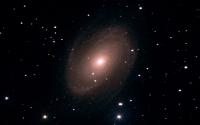Strongly Celestial Looking outward; looking backward in time... |
 |
||
Equipment Here I will describe (and picture, when it makes sense) the equipment I am using. I will also try to indicate why I got certain pieces, what works for me, and what does not. I'll also provide links where appropriate (though to be clear, I am not getting paid by anyone to refer people to them!). In most cases, I will provide the primary link to the manufacturer, and you can look for the specific piece from there (so I don't have to keep managing links as they move items around!). |
||
Mount |
||
Model: Orion SkyView Pro with GoTo Key Specifications Comments Note: This mount has an optional polar scope which is a HUGE help with polar alignment! I bought it and would recommend it to anyone considering this or a comparable mount. |
||||
Telescopes |
||
Model: Orion Maksutov-Cassegrain 180mm Key Specifications Comments Even with a focal reducer and a long focal length imager (like the Canon T2i I use), this telescope is incapable of picking up large objects like Andromeda galaxy or the Great Orion nebula (unless I mosaic a bunch of pictures together, which I have not yet tried). |
||||
Model: Coronado SolarMax II 60mm Key Specifications Comments I am still learning how best to capture them in pictures, but even my early attempts are fun to look at. See my Sun Gallery for examples. |
||||
Model: Orion Short Tube 80-A Refractor Key Specifications Comments My plan is to learn with this scope and perhaps some day move up to a scope with better optics (and re-purpose this one as a guide scope). |
||||
Imagers |
||
Model: Canon T2i DSLR Key Specifications Comments This camera has an IR cut filter in it which can be removed to improve astrophotography. I have not pursued this option, though. |
||||
Model: Imaging Source DBK 21AU618.AS Key Specifications Comments |
||||
Model: Orion Starshoot Solar System IV Key Specifications Comments |
||||